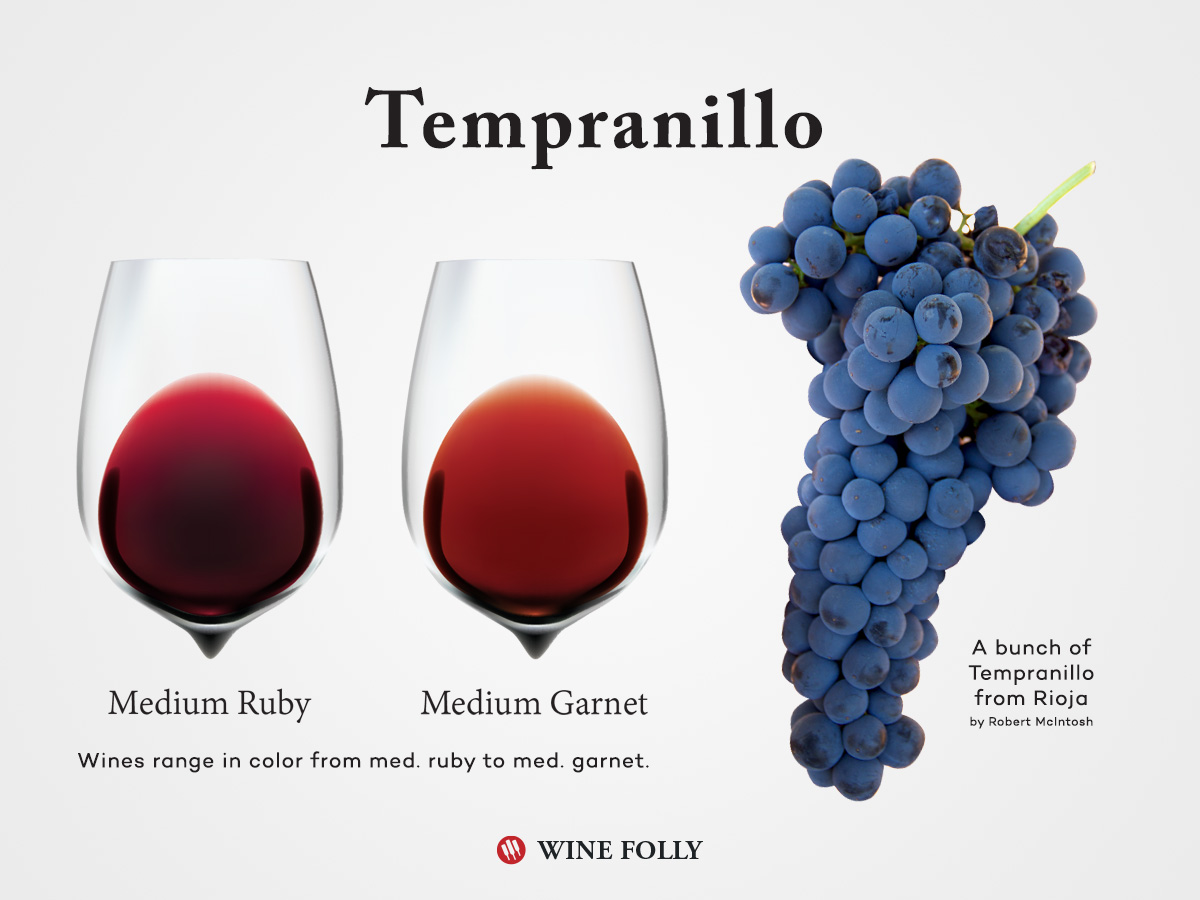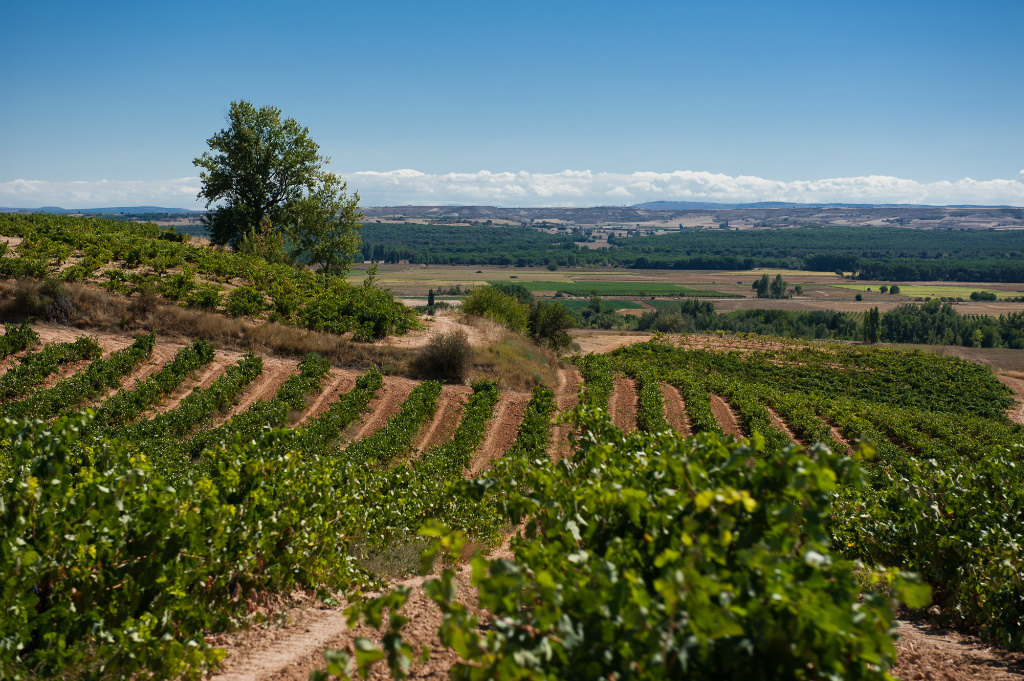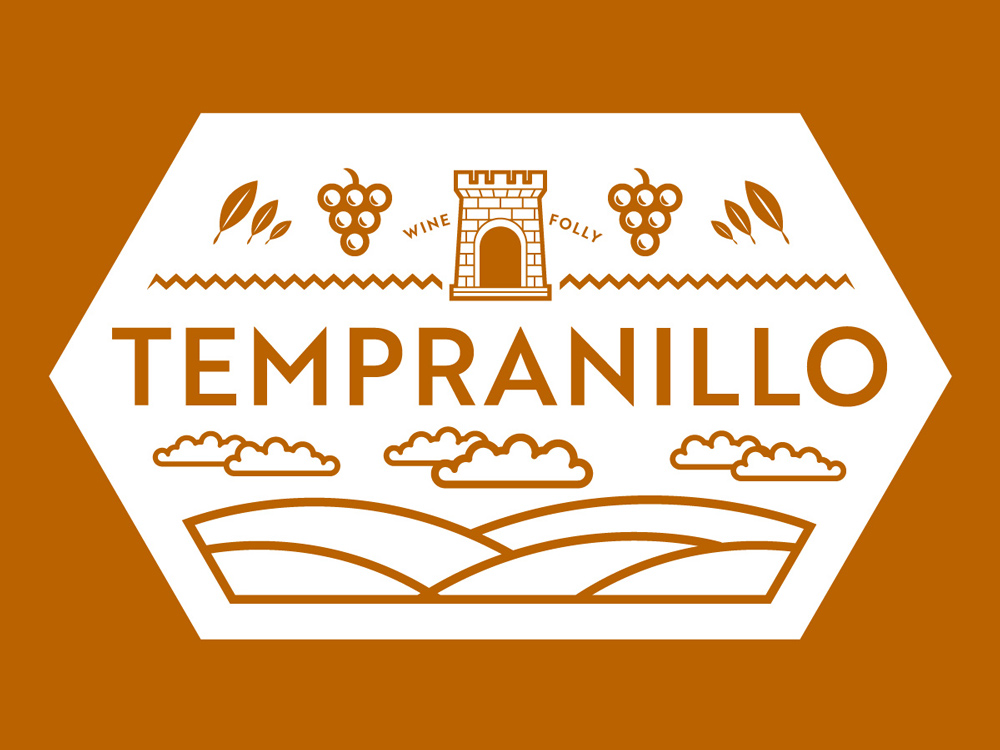Spain’s top red wine, made famous by Rioja, where wines are classified (in part) by how long they age in oak. It’s amazing that a well-made Tempranillo can age for over 20 years.
Primary Flavors
- Cherry
- Dried Fig
- Cedar
- Tobacco
- Dill
Taste Profile
Handling
-
SERVE
60–68°F / 15-20°C
-
GLASS TYPE
Universal
-
DECANT
1 Hour
-
CELLAR
10+ Years
SERVE
60–68°F / 15-20°C
GLASS TYPE
Universal
DECANT
1 Hour
CELLAR
10+ Years
Food Pairing
Bolder, aged Tempranillo wines pair nicely with steak, gourmet burgers, and rack of lamb. Fresh styles match well with baked pasta and other tomato-based dishes.

Fun Facts About Tempranillo Wine
- Tempranillo is Spain’s most widely planted red grape.
- Ever had Rioja (“rhee-yo-ha”)? This region is famous for its Tempranillo-based wines.
- Tempranillo goes by many names. For example, in Portugal, it’s also known as Tinta Roriz and Aragonéz.
- Well-crafted expressions can age for two or more decades.
- Tempranillo is a major blending grape used in Port (where it’s called Tinta Roriz).
- There is a rare white mutation called Tempranillo Blanco (found in Rioja Oriental).
- In the fall, Tempranillo vineyards turn a brilliant red color.
- Central and southern Italy have more Tempranillo than we thought. Some vineyards thought to be “Malvasia Nera” turned out to be Tempranillo.
What to Look for in Tempranillo Wine
When tasting Tempranillo wines, we look for clues that indicate it was made with exceptional quality grapes. For Tempranillo, you’ll note a few things:
- While it’s not the deepest-colored red, a higher quality, youthful example will have a deep ruby-red hue with a bright red rim.
- Expect tannin levels to be high and acidity should also be noticeable (to complement the tannin).
- Fruit flavors are generally in the red fruit spectrum (red cherry, black cherry, raspberry) with subtle savory fruit notes (dried tomato, red pepper, etc.).
- Top-level Tempranillo wines often age in oak (American or European oak) for at least 12 months.
- While the body does not get as rich as Cabernet Sauvignon, Tempranillo is very complex with layers of flavors from start to finish.
How Much Should You Spend?
There is a wide range of quality in Tempranillo wine. On the cheap, if you walk into a supermarket in Spain, there are plastic jugs of “vino tinto” that cost only a few Euros. That said, top-level versions sell for several hundred dollars a bottle and age for decades.
Where Tempranillo Grows
A popular theory about Tempranillo’s origins is that the Phoenician civilization brought the grape to the Iberian Peninsula. It’s the main grape in many top regional wines, such as Rioja, Port, and Ribera del Duero.
Beyond Spain and Portugal, Tempranillo is hard to find. Plantings are sparse in Argentina, Southern France, Australia, the United States, and Mexico. Its vineyards enjoy high elevation in sunny climates and mountainous valleys with protection from the elements.
Here are some regional Tempranillo wines you must try.

Rioja, Spain
TASTING NOTES: Cherry, Dill, Cigar Box, Sun-Dried Tomato, Vanilla
The Rioja region in north-central Spain offers what many consider one of the world’s benchmark areas for Tempranillo. Why? Well, top-quality examples from this area age tremendously well.
- At 10 years, they evolve into polished red wines with rich red fruit notes.
- At 20 years, they soften and subtly sweeten with nutty and dried fruit characteristics.
Still, the region is quite large and very productive, so it’s easy to find a range of quality. Not all are meant for aging, however.
So, if you’re looking for a great place to start, consider tasting a bottle of Reserva Rioja and dig into the history (and style) of what this region has to offer.
Rioja uses a couple of classification systems for quality. One is through the aging regime, and the other is by regional specificity.

Ribera del Duero and Toro, Spain
TASTING NOTES: Black Cherry, Blackberry Bramble, Bay Leaf, Brown Sugar, Dried Fig
In Ribera del Duero, they say, “10 months of winter and 2 months of hell.” The region’s extremely hot (and shorter) growing season, paired with its soils (sandy clay with chalk-limestone marls), produces a richer style of Tempranillo wine. In Ribera del Duero, you’ll often find it referred to as “Tinta del País,” meaning “country red.”
The Toro region lies upstream along the Duero River (aka the Douro in Portugal). Here, they often call it “Tinta de Toro,” and it’s made in a similar rich style. These wines are harder to find than Ribera del Duero (outside of Spain) and are notable for robust, grippy tannins.
For enthusiasts and collectors, Toro is a place to explore more.
Tempranillo Terroir
There are many other great places for Tempranillo wine. Here are some interesting observations about what makes great Tempranillo “terroir.”
- Tempranillo is moderately drought-resistant and very productive. Thus, the best sites have moderately poor soils that limit productivity naturally.
- It produces higher tannin and deeper color when grown in clay-based soils. (Although high yields will reduce intensity.)
- Cooler nighttime temperatures cause the grape’s bunches to stay tight, which helps with tannin structure and acidity as it ripens.
- It’s a sensitive, thin-skinned grape that generally benefits from protection from windy locations. It loves the sun.

